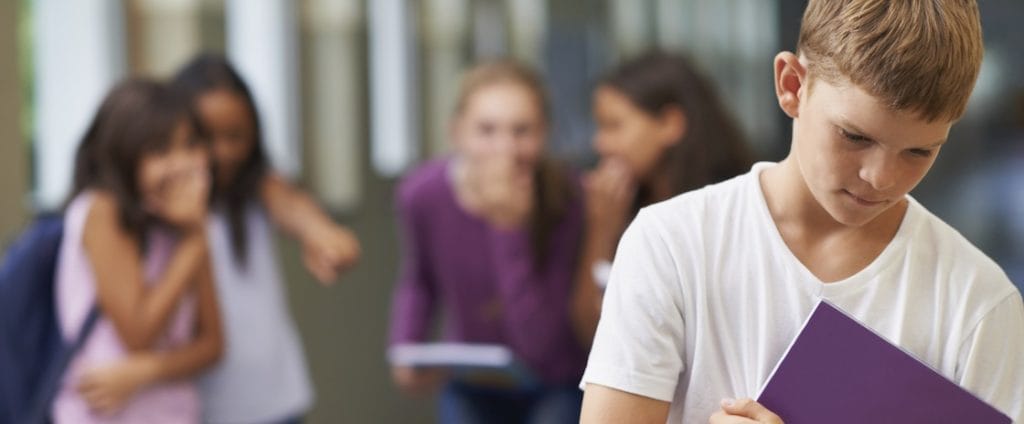A recent case of bullying is that of Ronin Shimizu, a 12-year-old who was allegedly bullied because he was a cheerleader. His family and friends said he was a friendly young man with diverse interests, some of which didn’t conform to gender norms. As a result, he was tormented with homophobic taunts. In a moment of overwhelming emotional pain, he ended his life, leaving his parents and community to grieve — and wonder what actions might have prevented the tragedy. The American Psychological Association defines bullying as “a form of aggressive behavior in which someone intentionally and repeatedly causes another person injury or discomfort. Bullying can take the form of physical contact, words or more subtle actions.” The numbers are alarming. The most recent figures indicate:
- 28 percent of U.S. students in grades 6-12 experienced bullying.
- 20 percent of U.S. students in grades 9-12 experienced bullying.
- Approximately 30 percent of young people admit to bullying others.
The term “bullycide” was coined by Neil Marr and Tim Field, who wrote Bullycide: Death at Playtime – An Exposé of Child Suicide Caused by Bullying. They define it as a “bully-associated child suicide epidemic,” one that reaches every culture and socio-economic background.
Types of Bullying and the Forms Bullies Take
Bullying takes many forms: It can include name-calling and use of racist, misogynist, homophobic, or xenophobic slurs, as well as physical assault. Social media can spread rumors and innuendo at lightning speed. Some children and teens might consider it playful teasing to post disparaging comments or images on a Facebook page or in a text message, but once a piece of information is shared, it’s impossible to contain again. Although peer-related incidents are most prevalent, bullies can also be adults who seek to control children by demeaning them. Parents are no exception, sadly. Emotional abuse from someone who should be a source of support might lead to even more severe long-term negative consequences.
The Impact of Bullying
Victims of verbal or physical abuse are likely to exhibit signs such as emotional withdrawal and isolation, anxiety and depression, loss of interest in activities they’d enjoyed before, psychosomatic symptoms, avoiding interaction with peers, and reluctance or refusal to go to school. Extreme reactions could include self-injury, reactive violence toward others, or suicide. Bullies are more likely to do poorly in school, struggle with addiction, and commit crimes. Bullying affects witnesses as well. They commonly feel a sense of powerlessness and divided loyalty, guilty for not taking a stand but afraid of becoming targets. Not all victims end their lives, but there’s a solid link between suicide and bullying. Victims of bullying behaviors are two to nine times more likely to consider suicide than non-victims, according to studies by Yale University.
How Adults Can Intervene Bullying
Former probation officer, comedian, counselor, and motivational speaker Michael Pritchard offers powerful suggestions for adult interventions to empower children and teens to safely respond and stand up to bullying. He observes: “Unaddressed pain turns to violence. We must begin to address the social-emotional issues facing our youth.” Adults closest to bullied youth have a unique ability to strengthen them and break the cycle of psychological and physical violence. The following actions can go a long way to recognizing bullying and helping victims deal with the problem constructively:
- Hearing what children say — and what they can’t express in words — is essential for healing. Writing in a journal or drawing pictures that call forth their emotions can take the place of vocalizing their pain.
- Believe children who say they feel bullied.
- Don’t dismiss their experience by telling them to “toughen up,” or “grow a thick skin.” Boys especially are expected not to see themselves as victims.
- Ask open-ended questions, such as “What has been happening that makes you feel that way?”
- Help them see the difference between fact and perception.
- Ask about the circumstances behind feelings of exclusion.
- Focus on their talents to strengthen their sense of self.
- Encourage activities with healthy, sober friends and family.
- Engage young people who have few adult role models with a mentoring program.
- Let them know you’re available to listen and love.
- Make your school or community a “bully free zone” with a zero-tolerance policy.
- Encourage children who witness bullying to speak up. Go with them to meet with school authorities if necessary.
- Meet with other parents and educators to discuss how to deal with the issue.
- Remind children and teens that speaking up for themselves and those they observe being bullied isn’t “tattling” — it’s a crucial step to ending the abuse.
- Intervene before the problem worsens if your child or student is bullying others.
- Encourage the celebration of diversity in the home and community.
- Remind children that retaliatory violence isn’t acceptable and only perpetuates the cycle.
- Be aware of signs that the teen may be considering suicide. Engage professional help.
- Tap into other resources. These include The Trevor Project, which calls itself “the leading national organization providing crisis intervention and suicide prevention services to lesbian, gay, bisexual, transgender, and questioning young people”; posters and educational materials that illustrate support for anti-bullying efforts; the Yale Center for Emotional Intelligence, which through research and education encourages communication and a more just and compassionate society; and the National Association of School Psychology, which offers a list of bullying prevention resources.
With these tools, let’s work to ensure fewer families and communities will have to face the loss of young life because of the effects of bullying.

